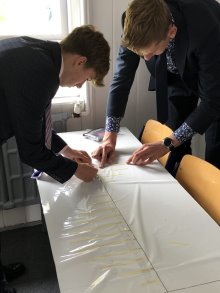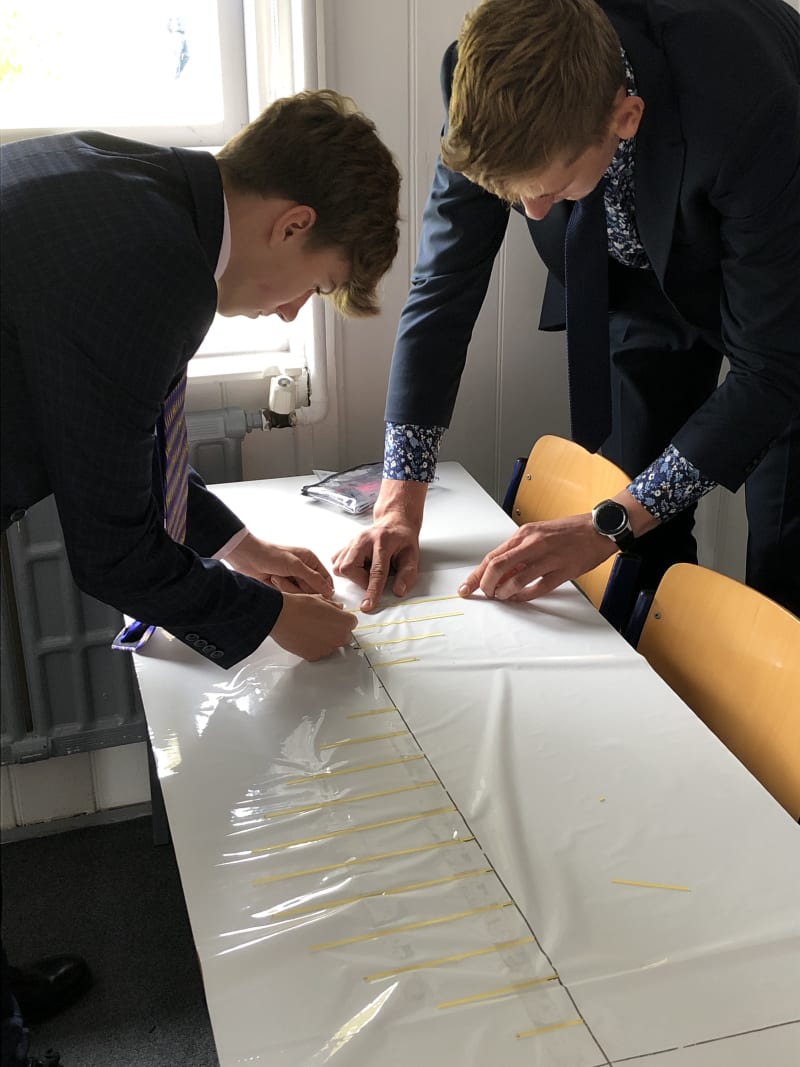
At the start of the Maths A Level course, with the help of spaghetti for measuring vertical and horizontal lengths, seven Sixth Form students (Jacques Bonnett, Silas Harris, Rosie Hart, Myles James, Alice McCall, Ryne Robson, and German Shashlov) discovered the curves of trigonometric functions from a unit circle. As a point travels around a circle of radius 1, the Sine and Cosine waves are produced from the ‘x’ and ‘y’ coordinates. From their GCSE Maths course, the pupils had previous knowledge of trigonometric ratios used to calculate lengths and angles of right angle triangles, but this lesson demonstrated that there are infinitely more angles possible.
Mrs Amanda Bowden, the students’ maths teacher, said: “Trigonometry is used in many different areas, including orthopedics, music, criminology, and engineering. In orthopedics, to find the deviation of a vertebra in degrees and know if the nerves are damaged. In music, to measure the level or pitch of a sound wave or musical note. In criminology, trigonometry can help to calculate a projectile's trajectory, to estimate what might have caused a collision in a car accident, or how did an object fall down from somewhere, or in which angle was a bullet shot. In engineering, civil and mechanical engineers use trigonometry to calculate torque and forces on objects, such as bridges or building girders. Engineers use trigonometry to decompose the forces into horizontal and vertical components that can be analysed.”




















